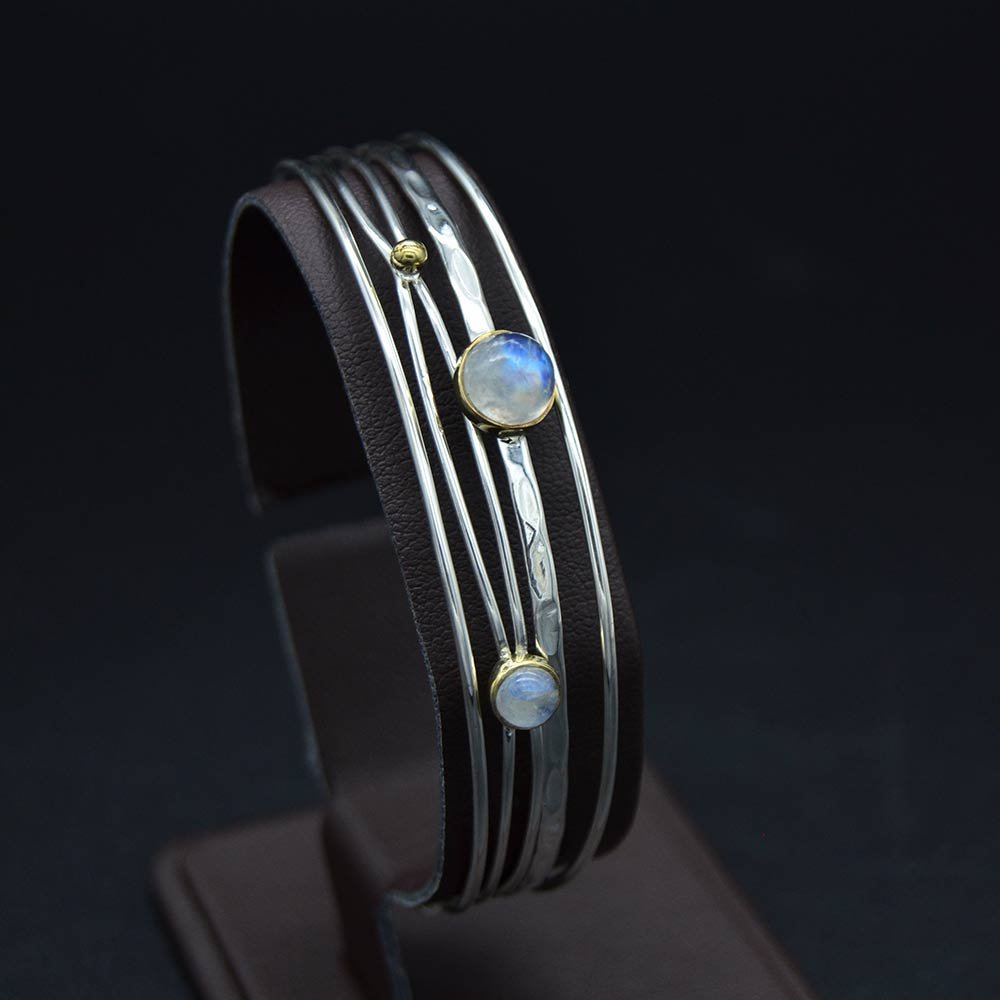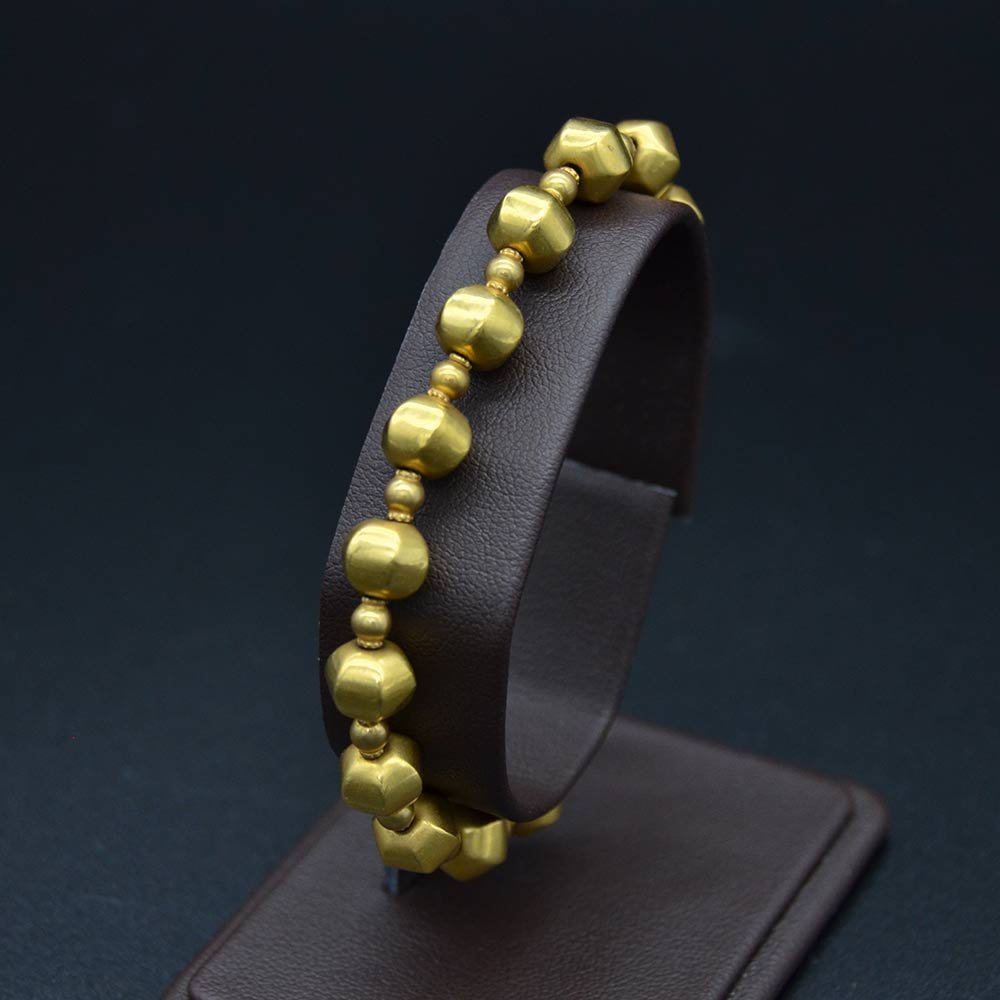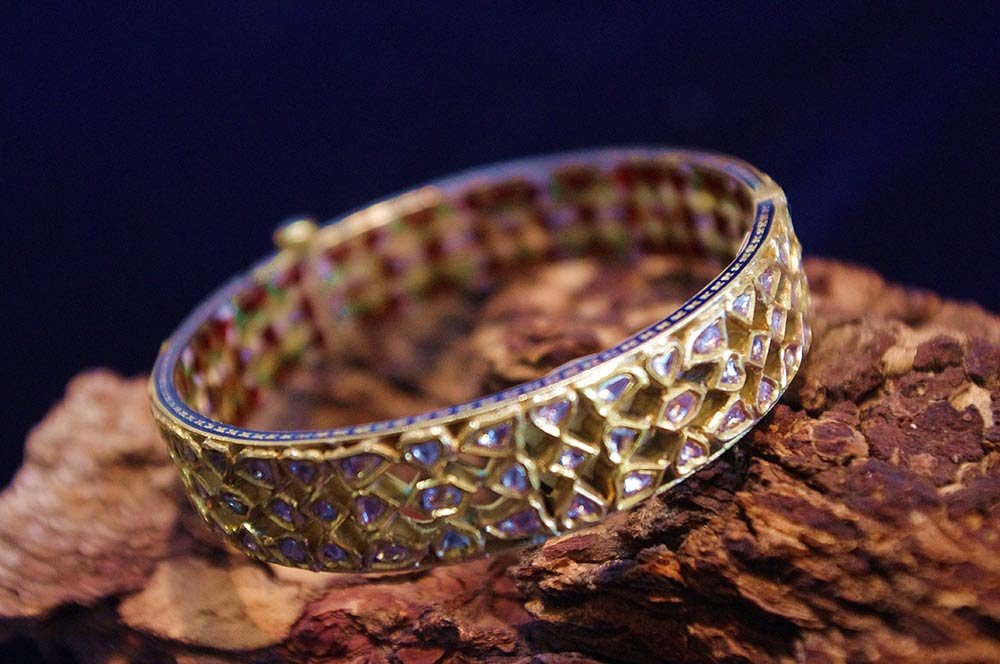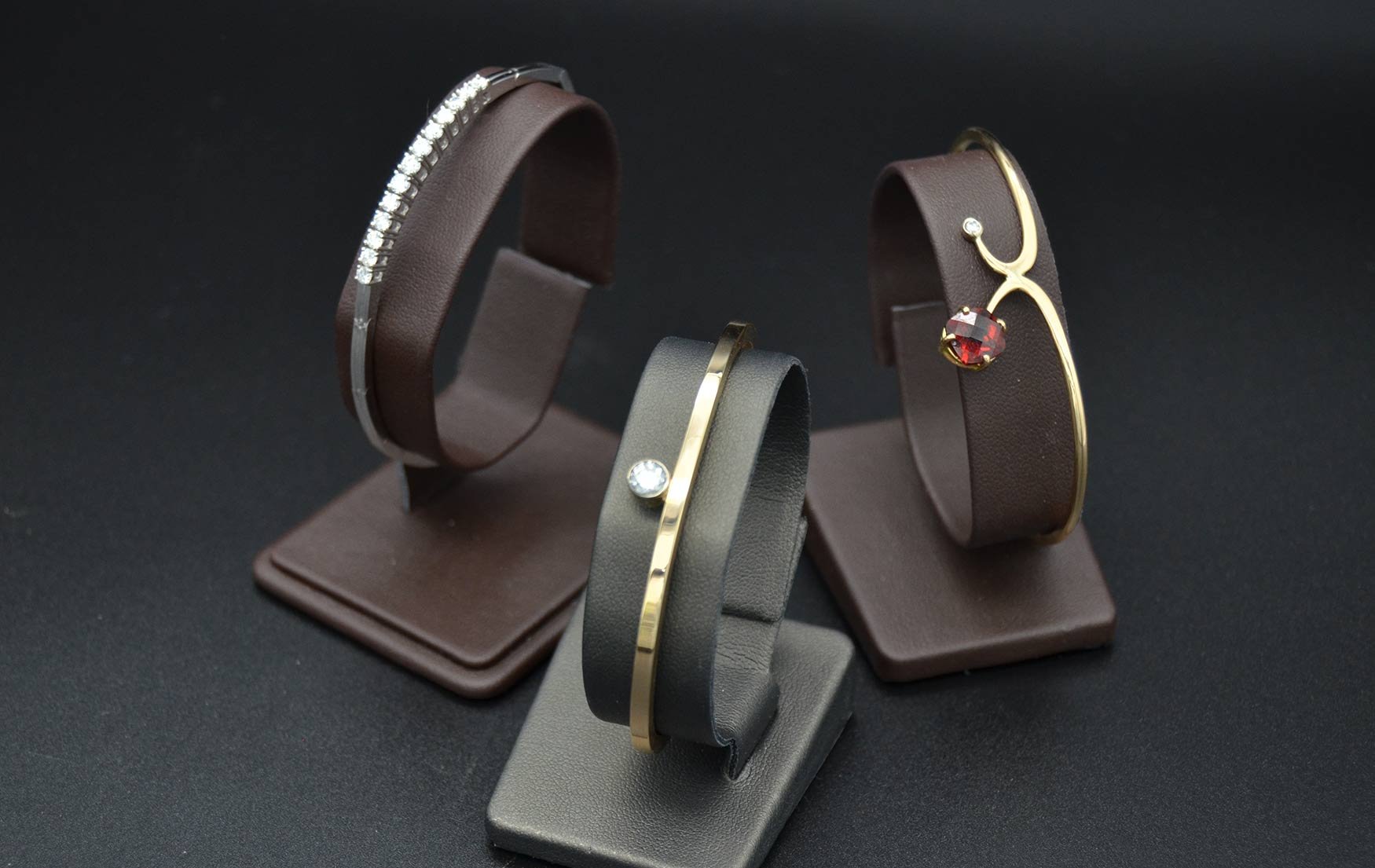The History of Bracelets
Archaeologists were able to date back the earliest bracelet to 7,500 BC found in Turkey.
It was made of obsidian. Bracelets became popular as far back as 5000 BCE, in Egypt. There have been bracelets found in Russia that are thought to be over 40,000 years old. Primitive humans were thought to have formed ancient bangles from stones, wood, and shells, then later on, from copper and bronze. Bangles are an important part of some marriage ceremonies throughout the world. While ancient Egyptians wore bracelets on their wrists, it is not thought there was much significance for this other than fashion. Greek soldiers wore leather bracelets to protect their wrists and it became a traditional part of their military uniform. Bracelets were popular for both men and women until The Middle Ages when they became an accessory worn mainly by women. Bracelets re-emerged as an extremely fashionable accessory for women in the 17th century. During the 20th century, men often began wearing bracelets again, although they were typically more simple and singular, whereas many women wore multiple bracelets of all different styles.
Early Bracelets
In 2008, Russian archaeologists from the Institute of Archaeology and Ethnology of Novosibirsk, working at the site of Denisova Cave in the Altai Mountains of Siberia, uncovered a small bone fragment from the fifth finger of a juvenile hominin, dubbed the "X woman" (referring to the maternal descent of mitochondrial DNA), or the Denisova hominin. Artifacts, including a bracelet, excavated in the cave at the same level were carbon-dated to around 40,000 BP.
The wearing of jewelry for adornment and ritual may have started as far back as 7,000 years ago, and archeologists have found evidence that people wore bracelets in ancient Egypt, Mesopotamia, and China. Early bracelets were made of grasses, slender tree limbs, and shells, then copper and bronze. After the Bronze Age (2000 to 1400 B.C.), artisans made bracelets of gold and silver. The ancient Chinese wore bracelets on wrists made from wood, jade, and gold. They became more decorative, adorned with shells and stones, as jewelry became a symbol of wealth and status. After neck ornaments, bracelets for the wrist, arm, or ankle are perhaps the oldest form of jewelry.
One of the first written records of humans wearing bracelets is in the Hebrew Scriptures. The Bible mentions that there are three types of bracelets: one worn exclusively by men, one worn only by women, and one that may be worn by either sex. Although bracelets are mentioned frequently in the Hebrew Scriptures, their distinctive characteristics are not described. Some of the oldest bracelet artifacts were constructed of bronze and gold and date back to the Bronze Age. Most were penannular, or oval, with expanding, trumpet-shaped ends. The gold bracelets were typically unadorned and hammered and bent into shape, while bronze bracelets were decorated with patterns and designs. At about this same time, German and Scandinavian warriors often wore spiral armlets for decorative and protective purposes. These armlets covered the entire forearm. In pre-Columbian America, indigenous artisans made bracelets from gold, precious minerals, and rock crystal. During Biblical times, bracelets were worn by both men and women, according to Hebrew Scripture. Some of the oldest-known bracelets were made of gold and bronze. The gold bracelets were often unadorned, while the bronze bracelets were decorated with designs.
Ancient Egypt
The history of Egyptian bracelets is as old as 5000 B.C. Starting with materials like bones, stones, and woods to serve religious and spiritual interests. From the National Geographic Society, the Scarab Bracelet is one of the most recognized symbols of ancient Egypt. The scarab represented rebirth and regeneration. Carved scarabs were worn as jewelry and wrapped into the linen bandages of mummies. Myth told of the scarab god, Khepri, pushing the sun across the sky. By the time of the First Dynasty (2680 B.C.), Egyptians were wearing bracelets made of gold and silver and decorated with semiprecious stones. Skilled goldsmiths of the New Kingdom (1558 to 1085 B.C.) crafted inlaid designs made of African gemstones. Although bracelets were sometimes buried in tombs as part of the deceased’s possessions, it appears that they were worn as decorative accessories rather than as amulets or ritual jewelry. In Ancient Egyptian tombs, strings of gold beads, hoops, and single, hinged bracelets have been discovered. Many of the bracelets made from plain or enameled metals were unadorned by stones. During the First Dynasty, bracelets worn by royalty were made of rectangular beads called serekhs, with turquoise, gold, and blue-glazed compositions.
In the Ancient Minoan and Mycenaean periods, bracelets were made of sheet metal and had elaborate loop-in-loop chains. Ancient Assyrians and Greeks often had two types of bracelets: coiled spirals in the form of interlocking snakes and stiff penannular hoops with enameled sphinxes, lions' heads, or rams' heads. In the Iron Age, these spiral forms were common in Europe as well. Scythian nobles wore rigid gold bracelets with animal motifs around the eighth century B.C. The Scythians, a group of powerful, nomadic tribes of southeastern Europe and Asia, were known for their fine metalworking and artistic style. Bracelets in Ancient Egyptian times were mostly strings of gold beads and hoops, and some were hinged. In Ancient Greeks, Romans, and Assyrians, bracelets were often in the form of coiled spiral snakes or penannular armbands with enameled sphinxes and heads of lions or bulls.
Mediterranean Influences
The ancient Greeks wore cuffs on the upper and lower arm as decoration. Greek soldiers used wide leather and metal cuffs as part of their dress uniform and for protection, a practice later adopted by Roman soldiers. Well-dressed Romans also liked coiled gold bangles that resembled snakes. Mediterranean jewelry styles spread across Europe, but bracelets fell out of favor, especially among men, as Europe transitioned to the Middle Ages (A.D. 476 to 1450).
The Etruscans were among the first to create bracelets with separate, hinged panels, a style still popular in the early twenty-first century. Ancient Roman soldiers often were given gold bracelets to indicate their valor in battle. In Great Britain during the Celtic period, men often wore massive protective armlets and serpent-shaped bracelets. These may have been an adaptation of German and Scandinavian bracelets worn during the Bronze Age and used to protect against sword attacks. Toward the end of the pagan period in Europe, plaited silver bracelets and intertwisted strands of silver wire became popular. A decline in interest in bracelets occurred during the Middle Ages in Europe, probably due to the fact that Christian beliefs discouraged adornments, as they suggested an "unhealthy regard for personal vanity" (Trasko, p. 27). The Renaissance focus on humanism prompted a renewed interest in bracelets and other types of jewelry. The Etruscans were among the first to create bracelets with separate, hinged panels, a style still popular in the early twenty-first century. Ancient Roman soldiers often were given gold bracelets to indicate their valor in battle. During the Iron Age, the spiral forms of bracelets with animal motifs were common in Europe. Meanwhile, the bracelets with separate, hinged panels were first created by the Etruscans, but the style was still popular in the early 21st century.
Asian Artistry
Intricate cuffs and bangles carved from jade existed in China as early as 2000 B.C. The ancient Chinese also valued gold bracelets and etched elaborate patterns of nature, animals, and mythical creatures into the gold. Gold bangles were the common bracelet style found in India, too, although strands of colorful metal and glass beads have become popular in modern times.
Indonesia
While many cultural examples of bracelets abound, the intricacy of meanings behind bracelets is found among the people of Timor, a remote island in Indonesia. In Timor, bracelets are natural, stylized, or abstract. Using the lost-wax process, which requires a new mold for each bracelet, ensures a one-of-a-kind result. Timorese bracelets, like family heirlooms or household treasures, may indicate a marriage alliance, social status, and serve as protective amulets or as important artifacts for ritual dances and other ceremonies. In premodern times, bracelets also were badges awarded for the taking of heads. The Timorese have special bracelets for fertility, life cycle and life crisis ceremonies, and other important cultural rituals. Timorese men wear the most spectacular bracelets; the women's are similar in style but smaller in size. Many bracelets display a traditional symbol indicating one's relationship to a specific Timorese house or family, called an uma.
European Revival
These arm trinkets were not only used as an adornment. In Celtic period Britain, men wore serpent-shaped bracelets and protective armlets to protect themselves from sword attacks. The Ancient Greeks soldiers wore metal cuffs on their upper and lower arms. When the Roman army saw this, they mimicked it and made their own arm accessories. During the Middle Ages, the bracelet became unfashionable, but it was brought back again during the 17th century. Women began wearing bangles and wrist accessories made from ribbon strings. During the Victorian era, charms and pendant-style lockets became a trend in bracelets. European women revived bracelets as common fashion accessories in the 17th century. They wore ribbons and thin bangles — often wearing several at a time. Bracelet chains became stylish accessories, especially in the 19th century; the designs linked cameos and medallions decorated with ivory and coral. Charm bracelets with dangling lockets and engraved charms became popular during the Victorian Era.
20th Century
During the 20th century, consumers could find bracelets of almost any design imaginable. Bracelets also became more affordable as mass production increased the availability of fashion jewelry. By the 1920s, the ornate designs of the late 19th century gave way to the clean lines of the Art Deco period. Designers added Bakelite and plastics to jewelry in the 1930s and made plastic bangles a wardrobe staple for teen girls. Women and girls adored charm bracelets made of gold-plated brass or sterling silver in the 1950s, but by the 1970s, and until the turn of the century, women wanted variety in their fashion. They wore wide cuffs, slender bangles, beaded strands, and thin chains. Men started wearing bracelets again, usually choosing gold or sterling silver link chains.
Plastic became a material for bracelets during the 20th century. For teenagers and children, plastic adornments became a fashion choice. Embroidery floss or thread was used to create armbands, especially friendship bracelets, which became popular in the 1980s. Jewelry makers also started creating charm bracelets made of gold-plated brass and sterling silver. This trend continues up to the present.
21st Century
Several lasting innovations in bracelet design occurred in the last decade. Silver became the most common material for link bracelets, cuffs, and bangles. This trend started in the 20th century when manufacturers mass-produced silver jewelry, which was less expensive than gold but still had the sparkle of a precious metal that buyers loved. The preference for silver over yellow extended to industrial metals, such as silvery grey steel, titanium, and tungsten. Industrial metals are now the dominant material in men’s bracelets. As the green-living movement grows, more people are demanding natural materials in their wardrobe; to learn more, read our guide on the best bracelets inspired by nature. Finally, today’s young people often wear simple bracelets to support social causes and showcase group identity; their banner can be a colorful rubber band, dangling charm or even a piece of string.







